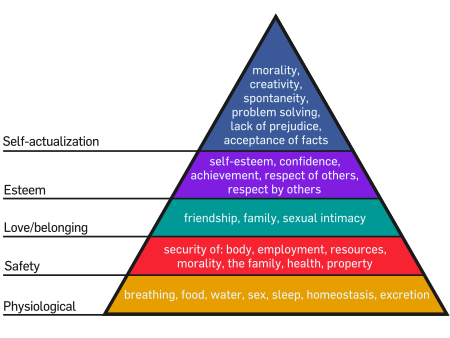Conflicts, Team Development stages, Negotiations, Motivation models
Conflict Styles
|
Avoiding |
The person seeks to avoid or postpone having to deal with conflict (often until more facts can be gathered, or one party has had time to think it through) |
|
Accommodating |
The person seeks to maintain the relationship with others by subordinating his own position |
|
Competing |
The person seeks to impose his will or solution on others, despite their misgivings or differing opinions |
|
Compromising |
The persons seeks to find a solution to the conflict by having each of the parties make concessions |
|
Collaborating |
The person seeks to find a solution by involving all parties affected by the conflict. |
Resolving Conflicts
|
Forcing |
Win-Lose -- One way to resolve a conflict is for one party to force the other to agree. This is the kind of conflict resolution that happens when one person has power over another and exercises it. |
|
Smoothing |
Loss – Loss -- Temporary – Smoothing minimizes the disagreement by making differences seem less important. This kind of resolution occurs when either one of the persons disagreeing or another person in the group attempts to make the differences smaller than they seem. |
|
Compromise |
Loss – Loss -- Compromise is similar to smoothing. Using this type of conflict resolution, each of the parties gives up something to reach a common ground. In this resolution the parties themselves agree to give up on some points but not others. In doing this they reach a common agreement that has relatively few points of disagreement. |
|
Problem Solving / Confronting |
Best Solution – Win-Win |
|
Withdrawal |
Yield – Lose -- Temporary |
Team Decisions
|
Individual |
Very Low Team Involvement – One person actually makes the decision |
|
Minority |
Low Team Involvement – A few of those involved in a situation meet to consider the matter and make a decision, and this decision is binding for all concerned |
|
Majority |
Low Team Involvement - More than half of those involved in the situation make a decision, and it is binding for all concerned. |
|
Consensus |
Very high Team involvement - Consensus is needed for most important decisions. |
|
Concordance |
Complete and absolute - Concordance (100% commitment) is needed for decisions of critical importance. |
Motivation Models
|
Needs |
People are motivated to satisfy perceived needs
MASLOW
CLAYTON ALDERFER
Suggested that needs can be classified into 3 broad categories
|
||||||
|
Expectancy |
If a person does not believe it is possible to do something, or that no consequence of value will occur to the person if that something is done, then the person will not be motivated to act in the first place. |
||||||
|
Equity |
People wanted to be treated fairly, and will be motivated to restore a feeling of equity if they are not treated fairly |
||||||
|
Herzberg’s Theory |
|
||||||
|
Theory X |
Managers think that, the workers are lazy, and no trust on them, need micromanagement |
||||||
|
Theory Y |
Self-led, motivated, and can accomplish new tasks proactively |
||||||
|
Theory Z |
Participative management style. Workers will be motivated by sense of commitment, opportunity, and advancement. Workers in this organization learn the business by moving to through the ranks of the company |
Negotiations
|
Persuading |
Based on logic or fact; can be measured objectively |
|
Bridging |
Offering of support; disclosing vulnerability |
|
Disengaging |
Legitimate tactic; use to buy time or de-fuse tense situations |
|
Asserting |
Based on personal beliefs, values and attitudes; very subjective |
|
Attractive |
Making others share positive feelings, envision desirable outcomes |
|
Avoiding |
Not legitimate; used when we are not comfortable about negotiating the issues |
Team Development Stages
|
Forming |
When first formed, a team is just a group of individuals who have been assigned to work together. Individuals tend to focus on their own goals |
|
Storming |
As teams begin actual work, they often go through a period of conflict. This is natural: members are sorting out their roles and differences in opinion on work issues |
|
Norming |
In the Norming Stage, the group starts to function as a team. Group norms are established and peer pressure tends to keep individual behaviors within expectations. Team member roles are clear and the team agrees on the right decision-making technique for a given situation. Real work tasks are attacked and the group agrees on approaches and processes. Things get done in a more definable, repeatable, predictable way. |
|
Performing |
Successful teams move on to the Performing Stage when their effort becomes focused. Members are dedicated to achieving team goals. The team responds to opportunities quickly. Leadership, responsibility and recognition are typically shared among team members. Members leverage the diversity of their team mates, and play to their individual strengths. A high level of trust and trustworthiness abounds. |
|
Adjourning / Mourning |
Some teams, such as project teams and parallel teams, have a scheduled end. When the team has realized its goal, it is disbanded. This final phase is called the Adjourning or Mourning Stage. When a team's work is finished, members may feel a sense of loss or disillusionment that affects their ability to be effective in their next assignment. |
Maslow Diagram - Wikipedia.org


